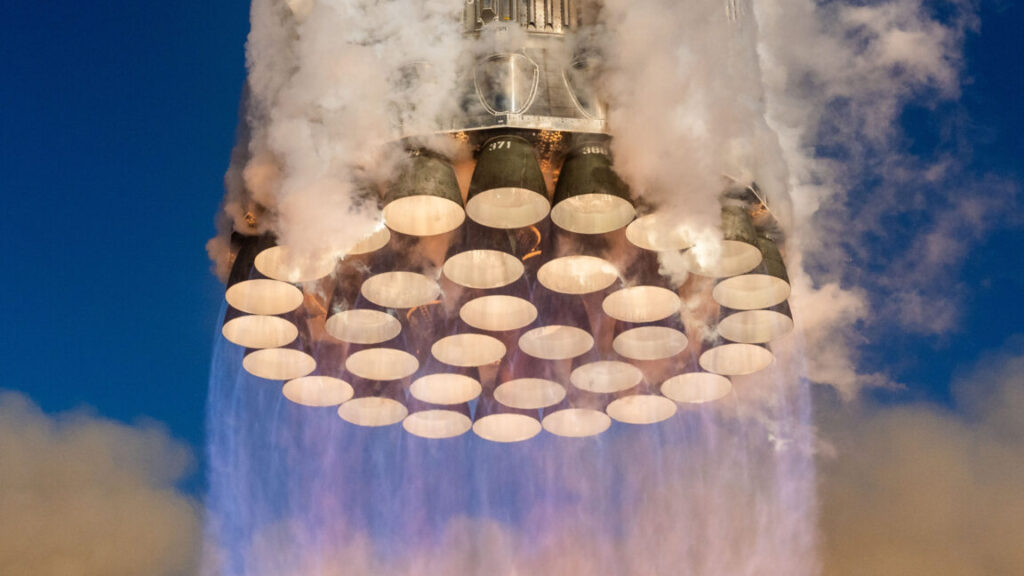Once engineers finished that work, they transported the booster to SpaceX’s test site in McGregor, Texas, for test-firings, then finally returned the rocket to Florida for final launch preparations.
There will be no such journey for the Super Heavy booster. First of all, it’s a lot more difficult to transport than the shorter, skinnier Falcon 9. Super Heavy’s design also features improvements informed by lessons learned in the Falcon 9 program. This helped SpaceX get the Super Heavy on the cusp of a reflight in less than three months.
You can watch a replay of Thursday’s static fire test in this video from NASASpaceflight.com.
.
With Starship and the Super Heavy booster, SpaceX should get more points for difficulty. Super Heavy is larger and has more engines than the Falcon 9, so theoretically, there are more things that could go wrong. And instead of touching down with landing legs at a separate location, SpaceX uses mechanical arms to catch Starship’s booster as it returns to the launch pad.
This approach should allow engineers to rapidly reuse Super Heavy boosters. Eventually, SpaceX will do the same with Starships returning from orbit.
Still investigating
At the same time that engineers are taking steps forward with the Super Heavy booster, the other big piece of Starship is holding up SpaceX’s launch cadence in Texas. The upper stage, or ship, failed at roughly the same point in flight on SpaceX’s two most recent test flights in January and in March.
These test flights were the first use of an upgraded, larger ship known as Block 2 or Version 2. On both flights, Starship lost power from its engines and tumbled out of control roughly eight minutes after liftoff, breaking apart and dropping fiery debris near the Bahamas and the Turks and Caicos Islands.
The failures prevented SpaceX from testing Starship’s upgraded heat shield, one of the most significant upgrades introduced with Block 2. The plan for both flights was to send Starship on a trajectory through space halfway around the world, then perform a guided reentry over the Indian Ocean, targeting a pinpoint splashdown northwest of Australia. A successful reentry and splashdown at sea could give SpaceX officials confidence to attempt a full orbital flight of Starship, culminating in a catch at the launch site in Texas.
Instead, SpaceX repeated the same launch profile from the January mission on the following flight in March. The company will likely do the same on Flight 9, the next Starship launch.


